




opted for Black screens. I didn’t know my peers past the bridge of their noses due to the mask mandate.
The campus was empty. Quiet. Still.
It was COVID-19. And that was how my college life began.
the theme one of resurgence, and renaissance. Revitalizing the school’s newspaper was one of the ways I wanted to inspire this communal revival.
Editor-in-Chief: Brier Evans Assistant Editor: Kiersten McCollum
by Brier Evans Editor-in-Chief bevans8@xula.edu
My first year at Xavier was shadowed with a theme of anonymity and seclusion. I didn’t know those who lived in my residential hall since all students were given single lodging. I didn’t know my classmates since my courses were online and most had
It was a depressing year, to say the least. I had missed out on an authentic freshman college experience and had missed out on ways of making an impact on campus, but that feeling wasn’t singular to me. It was a shared experience with the rest of the student body.
I am currently in my third year at Xavier, and for this year, I intend to make
I have been the Editor-InChief of The Xavier Herald for the past two years, and for this year, the paper is making a comeback after the last five years without any print publication. It will be a time of renewal for the newspaper, and it will be a chance for our many student writers to have their voices heard, seen, and felt. This is the rebirth of The Xavier Herald. This is The Renaissance Edition.
Signed, Brier
compare to the bond he had with his longtime friend and coworker Mr. Varion Laurent.
by Kiersten McCollum Assistant Editor kmccoll1@xula.eduWhen someone passes it can often feel like you are losing a part of yourself.
Through the passing of Mr. Anthony Montgomery, the Mass Communication department has lost a part of us that was generous, supportive, and above all else, kind. As painful as it can be knowing that his physical presence is no longer here, his values and lessons are a part of this department forever.

Montgomery touched the lives of his friends, colleagues, students, and family but the way we will remember him the most is for how he touched our family. He poured into the students and truly believed each one of us would amount to something spectacular. He wasn’t the type to treat others the way he wished to be treated, but instead the type to treat others with love and compassion just because he felt they deserved it. He was that person for a lot of people, but few had a relationship that could
“I just wish everybody could experience having somebody in their corner like that, that actually genuinely cared about them and their family and everything like that,” said Laurent, who is the student media director.
And that’s what he did. He genuinely cared.
Montgomery was without veering into redundancy, but that’s exactly what his kindness was, redundant. Constantly there and never wavering, even when you didn’t want it.
“Anthony was the type of dude that if he’d be going to lunch and would see students out and they would just hint at being hungry, he would go out and come back with lunch for all of them,” Laurent said.
And he would always make sure it was good food too, he wasn’t the type to bring a student a McDonald’s. Montgomery was a “local bakery fresh dozen donuts” kind of guy.
It can be difficult to talk about the passing of someone whose impact is as indescribable as Montgomery, but it becomes a little easier when they’re as nurturing and kind as he was.
“He was always encouraging, no matter what I was going through he was like ‘I can’t wait to see you do big things in the future, I know your work is going to be amazing’ and I think people don’t understand how valuable that is to have someone constantly encourage you,” said Mckenzi Neal, a junior, mass communication major.
There aren’t many ways to emphasize how compassionate and generous
“I think everyone should know that he was a funny guy. Mr. Ant would make some funny jokes and I just think that was him,” said Scott Lipscomb, a senior, mass communication major. “He just had a way of making students laugh and I think that’s what they’ll remember about him.”
When someone passes it can often feel like you are losing a part of yourself, but for us…we gained something. We gained a memory of a man who was funny, compassionate, and above all else, kind.
We love you Mr. Montgomery, always and forever.
- All of us.
xulastudentmedia.com
Leah Clark Tyana Jackson
Skylar Stephens Amadeus Swagerty
Jordan Booker Corbin Johnson Faith LeMelle
Brier Evans Jasmine Christopher TaShia Hogue
Zora Thomas Cameron Finn Hannah Stoutmire Kareemah Muhammad
Kiersten McCollum TaShia Hogue Lara Molines
Brier Evans Leah Clark Chloe Ward
Liza Montgomery Kiersten McCollum Brier Evans Chloe Ward Ariel Shorter
Tyler Hailstork Christopher Taylor Omaria Ackerson
Faculty Advisor: Dr. Quincy Hodges qhodges@xula.edu
Department head: Dr. Shearon Roberts srobert7@xula.edu
PRSSA Advisor: Dr. Nia Mason nmason1@xula.edu

Herald Office: Xavier South, 112B 504.520.5092
Email Stories: herald@xula.edu
The Xavier Herald is an award-winning newspaper produced by, for and about students at Xavier University of Louisiana in New Orleans, La. While The Herald is
in the Department of Mass Communication, its contents do not necessarily
the views of the department or Xavier University. The Herald is a member of the Associated Collegiate Press and as such adheres to the collegiate journalists’ code of ethics. The Herald staff reserves the right to accept, edit, or refuse content.
Follow us on Twitter and Instagram: @xulaherald
Xavier will mark its centennial year in 2025.
As the university looks to its future it aims to expand its reputation as a leader in the nation for producing AfricanAmerican students who pursue medical degrees and careers in biomedical and STEM fields.


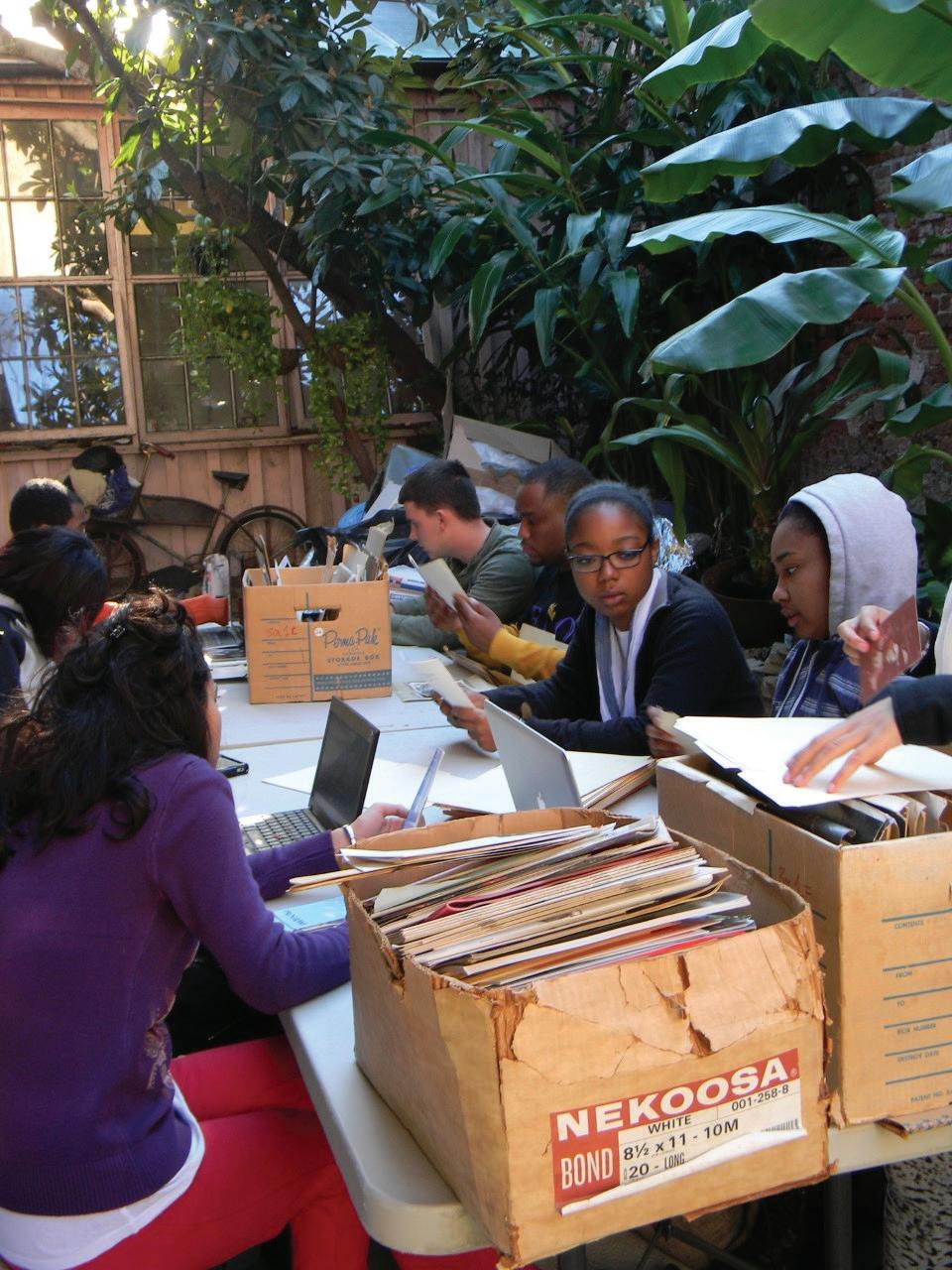
On April 21, Xavier announced that they were in the planning phase of a Graduate School of Health Sciences and a Medical School. The goal is part of the university’s mission to work to close gaps in health disparities and underrepresentation among health care providers.
In building a path to a medical school, Xavier has created graduate programs in Pharmaceutical Sciences, Genetic Counseling and Health Informatics, a Physician Assistant program, and a Speech Pathology Master of Science program.
“One of the criteria in our thinking is also where is the representation of AfricanAmericans needed,” said Xavier’s president Dr. Reynold Verret. “Now the piece of the medical school is also Xavier’s commitment to… our mission … to contribute to a more just and humane society. Outside these economic inequalities are the health disparities,” Verret said.
The medical school will serve as a reinvention of the university that will expand educational opportunities for current and future students to pursue careers in medicine.
“While planning the

medical school and other programs we think about how this new program will help to integrate a profession that is segregated not by law but by labor statistics,” said Dr. Anne McCall, Xavier’s senior vice president of Academic Affairs and provost.
Once there were 19 Black medical schools. Today there are four: Howard University School of Medicine, Morehouse School of Medicine, Meharry Medical College and Charles R. Drew University of Medicine and Science. Faculty believe that Xavier is uniquely poised in the South to join the small group of HBCU medical schools.
“We are able to get really good students to come here and I really see the same thing happening with the new medical school,” said Dr. Corey Harrison, an assistant professor in the Biology department at Xavier.
“They’re in a really amazing position right now because there aren’t many HBCU’s with medical schools so this will give those minority students an opportunity to actually become medical doctors,” Harrison said.

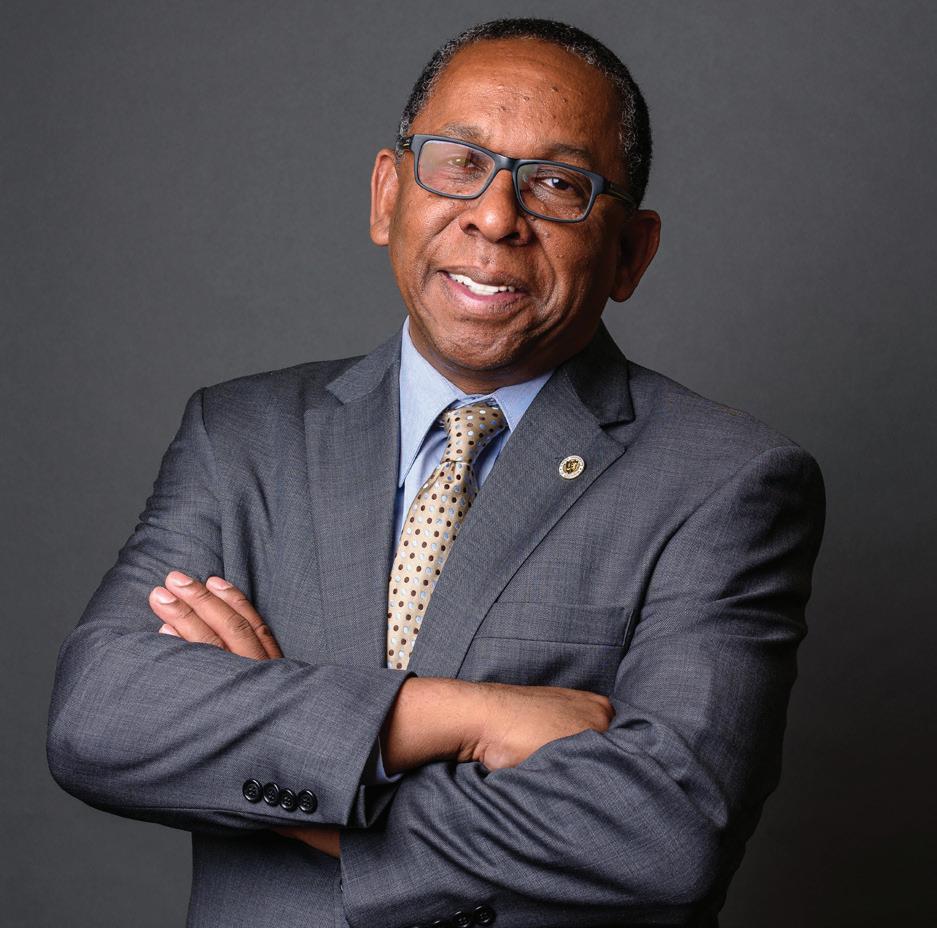
Black students in 2020 made up only 11-percent of medical school first-year students according to the Association of American
Medical Colleges. Xavier hopes to continue to be an important player in not only providing to the pipeline to other medical schools but one day to provide more students
with pathways to medical school.
“Right now when I look at medical schools I want them to be high in diversity because I wanted to be surrounded by Black people who are doing the same things that I want to also while motivating me,” said Morgan Banks, a sophomore biology, pre-medicine major from Alabama.

“With the new announcements for the medical school and new buildings on campus, it also makes me feel better about my decision to come to Xavier. I would love to attend an historically Black medical school just so I continue to be surrounded by Black excellence and just to foster my Black identity,” Banks said.

University of Louisiana. Verret recalled this story from his sophomore year of college while talking about his college experiences. Being raised in Brooklyn, N.Y., a racially diverse city, Verret hadn’t encountered a situation like that.
 by Skylar Stephens Staff Writer sstephe8@xula.edu
by Skylar Stephens Staff Writer sstephe8@xula.edu
Two young men were walking the campus of their predominantly white institution. One is Haitian and one is Ghanaian. They soon realized that they were being followed by a security guard. They continued walking for a few more minutes, but the security guard did not stop following them.
“What are you doing here?” the security guard finally stopped the friends to ask.
The young Haitian man realized that he was being racially profiled for the first time in his life. This man’s name is Reynold Verret.
Today, Verret serves as the president of Xavier

“America has always had trouble with Black excellence,” Verret said. “If a young man or woman likes to do mathematics, write poetry, or paint, sometimes they have to do so in the closet.”
Verret said that it’s important to create an island where Black individuals can
do these tasks and have it praised and uplifted. Xavier is that island. He expressed that historically Black universities and colleges, like Xavier, are safe spaces for Black students to flourish. Because of his passion for creating this safe space, one of the things that keeps him up at night is public safety.
“Too many people never make it to my door at Xavier or to any door,” says Verret.
Though the hardships of being president, Verret also acknowledges the upside, which is getting to live vicariously through his students. He recalled reading about the daughter of one of his past students being in graduate school now.
“In many ways, I feel like a grandfather to her even if not through blood,’ he said. “We live vicariously through our students. That’s the nature of the profession. Otherwise, there’s no purpose.”
The relationships that Verret has formed are what make New Orleans his home
now. Since coming from New York, he has made family and friends which he believes is what makes a place feel like home. His oldest son was born in New Orleans and he said forming a new sense of family after relocating is what makes a place feel familiar. In the same way, Xavier is that familiar place where family can be made for incoming students.
to add representation into workplaces.
“Xavier has always existed as an example of showing the world what is possible. That’s what we’re called to do,” Verret said.
Q: Favorite ice-cream flavor (since you like to host icecream socials on campus)?
Cherry vanilla
Q: Which decade you think is the best decade for music?
The 70s
Q: Name one person dead or alive you’d like to meet?
Albert Einstein or W.E.B DuBois
Established in 1925, Xavier is approaching its centennial year. It’s important to Verret that the university continues to grow. During his time as the president, he plans to continue making Xavier a safe space for minorities to gain the skills needed
Q: What song always gets you on the dance floor?
Billie Jean – Michael Jackson
Q: If you weren’t the president of a university, what would you be doing?
In the lab!
“I believe my leadership style is one that focuses on delegation and development of my team. I always make sure to maximize the skills of those around me so we can be as efficient as possible,” Ugoh said.
fear that I wasn’t good enough or wouldn’t be accepted,” said Ugoh, who is a native of Lagos, Nigeria.
important to have compassion as it keeps you centered on your why so you remember that it’s not about you, but the students,” Ugoh explained.
and we all strive to create a more just and humane society,” he said
by Amadeus Swagerty Staff Writer jswagert@xula.eduFor the illustrious Xavier University to uphold its legacy, it requires not only impressive students but also community-centered, humble and wise leadership. And even though he touts a schedule full of extracurriculars, classes and responsibilities, Munachismo Ugoh, or Muna as his peers call him, Xavier’s current Student Government Association president, is the first one to rally his classmates together for action be it to advocate for campus events, COVID-19 contingencies for student, or even longer library hours.
“When leading through COVID the situation was definitely unique, I had to learn how to adapt and become flexible through different circumstances,” he recalled.
Adaptability is an accurate word to describe Ugoh as from the beginning of his tenure as a Xavierite, he has been an active part of serving the university’s community.

He got involved in campus life as a residential assistant, the vice president of the SGA, and most importantly, being a friend to an innumerable amount of people on campus, he shared. However, being such a pillar in the community was not initially what Ugoh expected or desired of his college career.

“Coming to school in New Orleans was really intimidating, especially being an international student. I had
“But now it definitely feels like a family and I’m assured that I’m comfortable and can accomplish what I set my mind to. The most memorable lesson I’ve learned is that it’s
Now in his senior year, Xavier’s student body president has seen his own growth, but there still were times of struggle. Though he loves serving the people, Ugoh’s brow furrowed as he described desires of anonymity as the pressure to perform and interact grew at times, as he served in office.
“The biggest obstacle I faced while in office is learning how to delegate and trust my team to be a support system,” recounts Ugoh. “It’s important to trust in yourself and in your ability but also trust in the students.”
He wants to ensure that students are able to contribute to Xavier’s legacy while they are still here and not only when they graduate.
“My faith has always been in God and while leading the school it remains so. However, I also have faith in the student body, because we as students are true investors at our institution
The weight of being a university student body president can be heavy, yet Ugoh shared he does not waste time worrying about the problems that are inconsequential.
“The experience of being president will help me forge my future,” the public health/premedicine major said. “I will use the experience as lessons in my future endeavors that will guide me to help create a more just and humane society.”
Before he knows it, he will join the class of 2023 to graduate in May. Until then however, the students’ trust, campus events, and possibly even extended library hours find a home and advocate in SGA president Muna Ugoh’s trusted hands.
“When I leave I want to be able to leave an impact on students where they can say they truly saw the change, were the change and felt the change. I want to be able to have developed leaders who can surpass even me,” Ugoh said.


after you graduate from Xavier and I definitely have seen the music department have its ups and downs and I wanted to be a part of adding to make the department even better.
experience.
by Amadeus Swagerty Staff Writer jswagert@xula.eduXavier’s music department mourned the loss of their long-time colleague and department head Dr. Tim Turner in May 2022. In keeping his legacy and the department’s traditions going, Xavier’s musical traditions are remaining strong with alumna like Sandi Lewanika, who joined the department in Fall 2022 and is an accomplished pianist and coloratura soprano.
Q: What persuaded you to come back and teach at Xavier?
There’s just an indescribable love you have,
So I think that is what persuaded me to come back and teach at Xavier, my love for Xavier the community. The students. I mean, I want my students to have that same, you know, opportunity to bond with their teachers and have very good relationships with the teachers and build their foundation and build their careers.
Q: What’s a misconception you feel people have about you?
I feel like people see me and say, oh my gosh, she’s so young and they associate being young with not having a lot of experience, especially in life or in just the academia or the field that I’m in. So I think that is a common misconception people have but I actually have a lot of
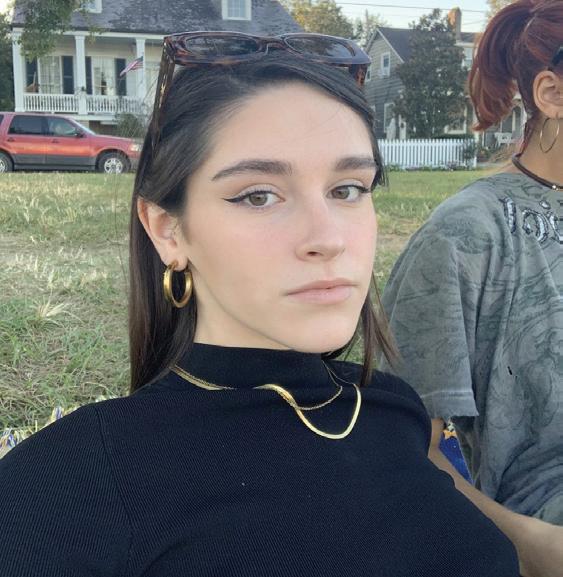
I’ve taught overseas, I performed overseas, I’ve been teaching really since I was in high school. I mean, on a, on the smallest scale just, you know, working in churches
Q: How do you approach teaching students at Xavier that would differ if you were at a Predominantly White Institution?
I’ve taught at a PWI, and it’s just very different because of how they may see you as a black instructor or, you know, just different things that could happen, microaggressions, all of those things. So I feel like teaching at an HBCU you don’t necessarily have to worry about that part. Like, having to constantly prove yourself to your students or having to worry about, are they going to try to touch your hair or disrespect you in a micro aggressive way.

Q: When was the moment that you realized you chose the right school?
I think this is all been divine, like divine timing for me. So I knew from the moment that even before I got on campus, like, when I was interviewing, I kind of knew, because it was just like, oh, such a positive experience from that point.
by Lara Molines Columnist lmolines@xula.edu
Hello y’all my name is Lara and I’m an exchange student from Alicante, Spain. I’m in the mass communication program here at Xavier, but in my Spanish university, I take courses in advertising and public relations.
First of all, I have to talk about the hard decision
and stuff. I was like the choir director and like that, go-to music person, people always needed tutoring. So I think that kind of helped me develop myself as a professor.
I’m very very bubbly and, you know, energetic and I just like to reach people on a personal level and inspire them on a personal level. So, I think that approach – it’s not just that, it can happen at PWIs but it’s just more authentic for me, at Xavier a HBCU.
And then even getting into faculty orientation meeting colleagues and I was also just a really good experience and then getting to know my students, that was also just a very good experience. But I think the moment Where was just like, okay, I’m good, I’m safe, I’m doing what I need to do, was when a student was just like, you know, I really like coming in here. I was like “what?” So I feel like in that moment, I was like, wow, okay, this is very divine for me. And this is like, it feels right.
of leaving all my family and friends and traveling 8,000 kilometers to start school, in a different country as an exchange student. Personally speaking, it’s a beautiful experience with negative and positive parts. I really wanted to come, it’s my first time in the United States.
New Orleans is a very cute city, I love it. In fact, when I look at Google maps, I thought it was a beach here, but then my friends told me it was a lake, that was so disappointing. I live next to the beach in Spain, and I miss
it so much. Also we don’t have hurricanes in Spain, so the presentation about what to do in case of flooding, tornadoes or hurricanes definitely scared me a little bit.
Talking about HBCUs, in Spain we don’t have them. And coming here, I’ve learned that an HBCU stands for historical Black college or universities. Their purpose was to provide Black youths the opportunity, where they were discriminated for attending established colleges and universities. Attending a Black college, I’ve learned
facts of Black history, and lots of things more than in my Spanish university that we don’t study. For example, in my Media Criticism class, we’ve learned the typical Black male stereotypes in American movies.
One of the most different things that I’ve noticed is the food. I have to say that literally everything is spicy, even pasta. From where I am we don’t eat too much spicy food. We like Tortilla de Patatas [Spanish omelet], Paella [rice dish], Gazpacho [soup] and a thing called “ir
de tapas” [small appetizers].
I’ve never seen that here. A few weeks ago I went to a Spanish restaurant in New Orleans with my friends and it was hilarious, and so spicy too!! Nothing in common with real Spanish food. I really miss it. One curious thing is that in Spain we don’t have mac-andcheese.
In Spain, we have lunch at 2 -3 p.m. and we have dinner at 9 -10 p.m. For my first days, it was a little bit strange having lunch at 12 and dinner at 6. Then at night I was so hungry!
Lee, a sociology and political science professor, has seen multiple students throughout his 34 years at Xavier. Many of his former students have gone on to fill various positions in public life.
by Leah Clark Chief Writer lclark15@xula.eduIn 1990, LaToya Cantrell moved to New Orleans to attend Xavier University of Louisiana. The 18-year-old California-native was new to the city as she had only visited once before while on a road trip with her grandmother at age 16.
As Cantrell spent her college years earning a sociology degree, she fell in love with not only Xavier, but the city as well, saying that she “found her soul in New Orleans.” Two decades later, Cantrell’s love for New Orleans put her on a life path to become the first woman in the city’s 300-year history to serve as mayor in 2017.
“I showed up with everything that I needed to be successful,” Cantrell said about when she first arrived at Xavier. “I just needed to immerse myself in the environment to learn, and the [school] leadership provided that every step of the way,” she said.

Fond moments of finding a community on and off campus and building longlasting relationships come to mind when she looks back on her time at Xavier. One of those relationships being with her mentor and former sociology professor, Dr. Silas Lee.
“Xavier is a very good mentoring ground for exposure and development of students who have shown how they transition from academic to professional in a personal way that represents the mission of Xavier,” Lee said.
“She was a very socially-conscious student who focused on social justice and social issues,” Lee said, “which is parallel to what she has demonstrated in her career path, focusing on social justice, economic and social inequity.”
Social justice and community work began Mayor Cantrell’s entrance into public office. After graduating from Xavier, she and her husband settled in New Orleans’ Broadmoor neighborhood where she became an active member of her community.
“It was showing up. It was me doing the work, getting results, and building relationships with people that saw more in me and encouraged me,” Cantrell said.
Following the devastation of the city by Hurricane Katrina in 2005, Cantrell led neighborhood redevelopment efforts as president of the Broadmoor Improvement Association. However, she shared that she never set out to run for public office. It was only after she was encouraged by members of her community that Cantrell successfully ran for the District-B City Council seat in 2012.
While on the City Council, Cantrell introduced bills to ban smoking in food establishments and combat the city’s housing crisis. In March 2017, she declared her candidacy for mayor and broke the glass ceiling with her historic win on Nov. 18, 2017.
On May 7, 2018, Mayor Cantrell was inaugurated as not only the city’s first woman mayor, but first Black woman mayor. She also became the first person born outside of New Orleans
to hold the position since former Mayor Victor Schiro in 1961. In November 2021, she made history again when she was re-elected for a second term in office.
“It’s something that I’m proud of, being able to demonstrate that a Black woman can shoulder the burden of leadership and lead an urban city,” Cantrell said. Since taking office, she has led the city through the COVID-19 pandemic, which she pointed out as some of her toughest days in office. She
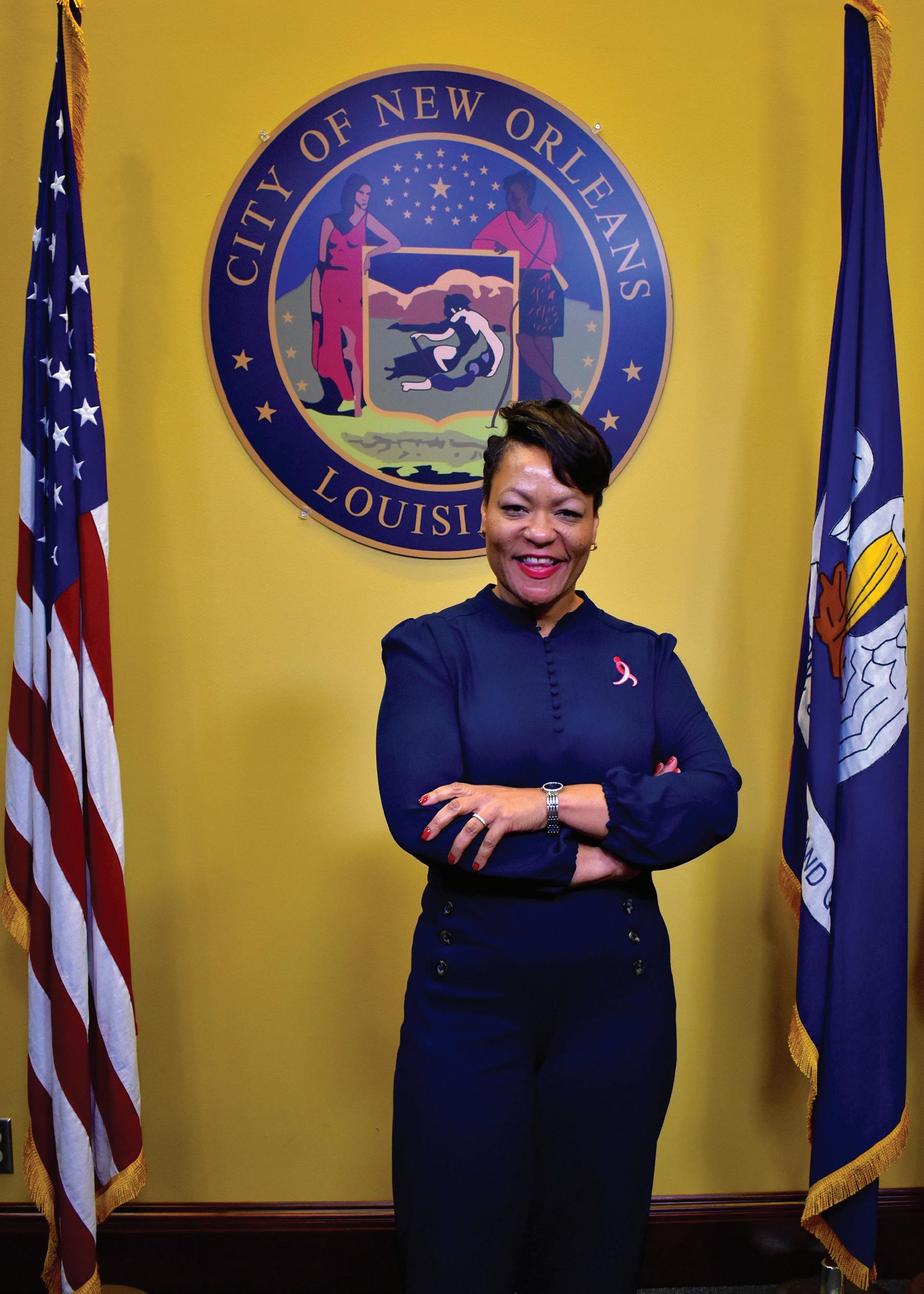
xulastudentmedia.com
focused on protecting the lives of residents from the deadly virus, even if it meant shutting down many of the events the city is best known for.
She has taken in all the criticisms in stride – folks who petition for a recall, those who were upset that she cancelled Mardi Gras in 2021, and others who blame her for the crime rates.
“As a Black female mayor, when that honeymoon period was over, the first opportunity they got when she put her foot down about
something that she truly believed in, she was pretty much chastised for,” said Dr. Pamela Waldron-Moore, a political science and women studies professor in her 25th year at Xavier. Waldron-Moore noted that Black women in office face the intersection of both their race and gender in how people view them as leaders in public office. This intersection is amplified in how they are covered in the mainstream media.
“If critics continue to see race as the first thing
about any executive, any city official, any state official,” Waldron-Moore said, “there will always be a problem with people who look like LaToya Cantrell.”
Many of these patterns, Waldron-Moore noted, can be linked to why there is a small number of Black women serving as mayors in the 100 largest cities in America. Of those 100 cities, only eight are led by Black women mayors including San Francisco, Chicago, Baton Rouge, Washington, D.C.; Charlotte, N.C.; and New Orleans.
Mayor Cantrell has also acknowledged how her identity plays a role in the criticism she receives.
“Being in this role and being a Black woman, it seems no matter how you do the work and get results, you’re always second guessed every step,” Cantrell said. “While you can point to results, with each challenge, it’s like you have to start all over again with proving you can do the job.”
She credits how she handles any critics to the
vulnerability and confidence in knowing who she is - two lessons she learned during her years at Xavier.

“It starts with knowing who you are in the midst of any adversity, you just stay focused, and not accept other people’s opinions about who you are,” Cantrell said. “If you’re doing the right thing and for the right reasons, then it’s going to be okay. ‘This too shall pass.’”
As Mayor Cantrell looks ahead to achieve her goals during her last term in office as mayor, she says that she is not focused on what she will do once she leaves office.
But as part of the small group of Black women serving as mayors in major cities, Mayor Cantrell knows she will leave a legacy behind for other Black women in the years to come.
“It’s very gratifying to know that I won’t be the last,” Cantrell said.
Go to xulastudentmedia.com to view and read the extended multimedia feature.
Q: What’s your favorite decade of music?
The 1980s
Q: We know you like to dance, but what else do you do for fun?
I like to cook with my daughter.
Q: What’s your favorite New Orleans dish?
My favorite New Orleans dish is gumbo, but not mine!
Q: Who is one person you wish you could meet, dead or alive?
Dr. Martin Luther King, Jr.
Q: If you weren’t in politics, what would you be doing?
If I wasn’t in politics, I would probably be a police officer.
Q: What’s the last movie that made you cry?
The last movie that made me cry was When They See Us on Netflix.
It has been six years since Eric Holder has held the position of U.S. Attorney General. But he feels compelled to still engage in civic life after holding national office. In his new book “Our Unfinished March: The Violent Past and Imperiled Future of the Vote - A History, A Crisis, A Plan,” he shared that his sole purpose is to keep the fight for voting rights front and center in American consciousness.
“We have got to recognize that the power still resides with us, and especially with young people,” Holder told the graduating class of 2023 and first year students


who attended Founder’s Day Convocation on Tuesday, Oct. 4, 2022. “You all are now the largest voting bloc in this country, you have the greatest power as a bloc than any other bloc in this country and yet you don’t exercise that power,” Holder said.
Social justice work is not new to Holder, who clerked with NAACP Legal Defense Fund while in law school. His career in the public eye spanned over four decades and three administrations. He hoped to inspire students to take on a life of public service.
“Thank you especially for your work in recent years … defending suffrage in the United States and helping us understand why it’s an essential element of our democracy,” said Xavier President Dr. Reynold Verret.
Holder said now he dedicates his time to continue
fighting for voting access and using his platform to educate Americans on this issue. From being a correspondent on CNN to engaging younger voters directly, he hopes that his insights as the former Attorney General will encourage
citizens to remain vigilant about their rights.
Holder left the students with a call to action to secure their future and to get involved in protecting the rights of the next generation.
of this country going forward and unless you all dedicate yourselves to making this country better it’s not going to happen. You can’t wait for other people, the cavalry is not coming. You all are the cavalry,” Holder said.
“You’re the leadersPresident Reynold C. Verret (left) and Former U.S. Attorney General Eric Holder Photo by Mark Veals Mayor LaToya Cantrell (center) and Xavier students at MLK Day of Service 2020 Photo courtesy of Xavier University of Louisiana
For two and a half years, Xavier’s campus life had been dormant due to the rampant spread of COVID-19. There was little to no signs of life on campus, and most students chose to continue their studies at home. Now, after some time, Xavier’s colors have finally returned. Students litter the yard, sports games have once again opened to the public, Homecoming ‘21 transpired, club organzations have opened once more, Greek life has resurged, and graduation had commenced once again in the Convocation Center. This visual collective is the ‘21-’22 recap of Xavier at its best.
by Omaria Ackerson Photographer oackerso@xula.edu
 by Chris Taylor Photographer ctaylo29@xula.edu
by Chris Taylor Photographer ctaylo29@xula.edu
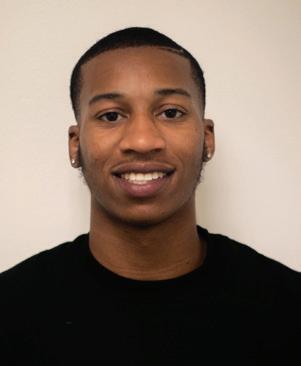

trapped within the confines of our colorism.
by Brier Evans Editor-in-chief bevans8@xula.edu“You’re pretty for a dark-skinned girl.”
“#TeamLightSkin.”
“Darkie.”
“She looks like a white girl.”
“I don’t date darkskinned girls.”
From the darkest shade to the lightest, from the age of two – if you’re a young Black girl you realize that you’re just not quite the right shade of Black. Colorism, especially within the Black community, is one of the most traumatic experiences Black women go through and yet there isn’t an active wave to confront the issue. It’s like as a global Black community, we’ve skipped over this movement. No marches, no protests, no banner signs: “down with colorism!” It is one of the legacies and remnants left over from colonialization of our mind, body, and soul as Black people. It is an internal conversation as much as it is external.
For decades the Black community has marched for a multitude of causes. We have marched for our gender rights, we have marched for our sexuality, we have marched against domestic violence, and we have marched for our Black men. After our generation took to the streets in 2020 to protest the death of George Floyd, we are not afraid to tackle hard, painful subjects. So where is the movement where we finally confront colorism?
The voices of eight Black women of different shades on our Xavier campus shows that from every corner of our melanated identity, we are still
If a woman is too light, she walks around with a target on her back. She is made the objectification of beauty, but at times, is also made to feel guilty for her complexion –that society has made her their preference. If a woman is too dark, at a young age it is not uncommon that she has heard that she is ugly or unattractive. She is made to feel ashamed of her skin, but as she gets older, she is hypersexualized and exoticized.
“Colorism is one of those topics that hasn’t historically been debated. Its effect has been something subliminal within culture,” said Dr. Abena Animwaa YeboahBanin, a senior lecturer and the chair of the Department of Communication Studies at the University of Ghana. “It is a lived experience rather than spoken, which is why, I believe, it doesn’t generate as much debate as another movement would such as the LGBTQ+ movement,” Dr. Yeboah-Banin added.
I set out to ask young Black women how they view colorism and experienced it to begin to understand why we as a community can’t process it, why we can’t talk about it, why we are ashamed by it, and why we are still trying to find a way of confronting it. These are their voices.
“If you’re not darker skinned, you don’t understand, and you really are oblivious to what’s going on behind closed doors. I never had a problem with my skin complexion until middle school when I was called names like ‘darkie’ and ‘midnight.’ At home, I was always told that my skin was beautiful, but in school I wasn’t made to feel beautiful and so I thought, maybe I don’t like looking this way, maybe I should look lighter.”
-Sabrina Pierre-Paul, junior Political Science/Prelaw major, Queens, N.Y.
“If we look at the

white is more accepted by society when we look at things such as job opportunities. I’m from a small town where there were just Black people and white people, and so for me when I was younger, it wasn’t that I wanted to be lighterskinned, I wanted to be white. It’s a mindset, whiter is righter, and I had to break myself out of that.”

-Diamond Bolden, junior Political Science/PreLaw major, DeRidder, La.
“I’m Mexican and Black, and in middle school I had Nigerian friends who were darker than me. There had been many instances where guys at my school had told them that they didn’t like them because they were too dark. It comes from the current beauty standard of the short lightskinned girl with curly hair. That’s who I am. I remember there was a time where social media kind of attacked
my skin color, so I don’t feel guilty about what I look like, but I do know that I need to be aware of the privileges I have because colorism is a real issue within the community.”
-Rose Lee, freshman Biology/Pre-Medicine major, Los Angeles, Calif.
“I think there is a movement. Is it proactive? No. Colorism is something you hear about it, but you don’t see it. I think it may depend on the environment. A lot of the movements today, I believe, happen in the major cities up North. You don’t typically hear about them in the South, at least I don’t. Born and raised in the South, when you’re Black you’re already raised to a standard and if you don’t fit that standard, it’s frowned upon. Where I’m from, in high school, I was considered lightskinned, and was looked at as prettier because of it by Black peers, but it didn’t matter
to date a Black girl.
-Asia Smith, freshman Chemistry/Pre-Medicine Major, Alexandria, La.
“I grew up in a white area, and I have a Black mom and a white dad, so in my school years I was made to feel like I wasn’t Black enough. There was a lot of talk about me having to follow stereotypes in order to be Black. I had to like watermelon and fried chicken, and I had to play

running, and I had to talk a certain way. It wasn’t even my Black peers that felt that way, it was my white peers. Now in college, I’ve never been made to feel that way directly, but I do still feel an inference.”
-Trinity Hixon-Wells, junior Dual-Chemistry and Chemical Engineering major, Fort Walton Beach, Fla.


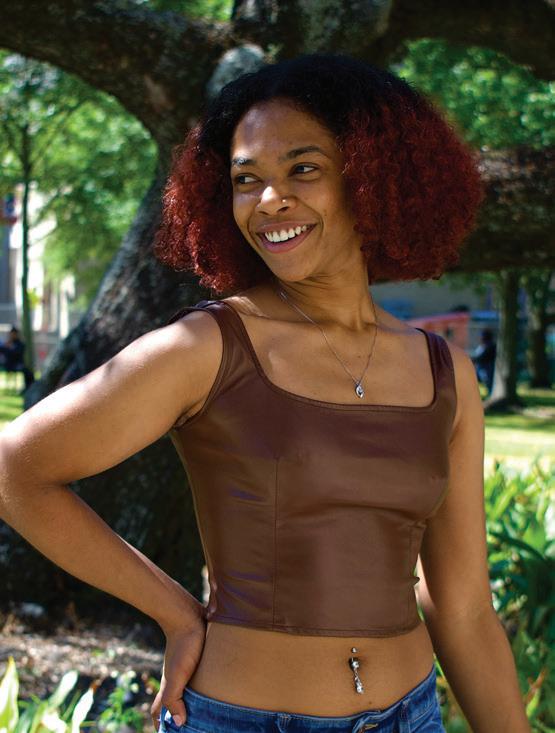
“I went to a party in L.A. last year, and it was a very exclusive party. There was a bouncer at the door who was obstructing and turning away dark-skinned girls from the party, and although he didn’t blatantly say what he was doing, all the girls in line knew what he was doing. If you were lightskin, you got in. My friends and I just had to leave. Before that, I wasn’t really conscious of color, until I entered high school. I was always told that I was light-skin by my friends and was told that I could get away with stuff because I was ‘light-skin’. Even in my family, my younger brother would say that I must not be related to him because he saw himself as brown, and me as ‘peach.’ I didn’t really know how to feel about that.”
-Brooklyn Ingraham, first-year Pharmacy student, New Orleans, La.
“I usually see videos online where lighter-skinned women are kind of mocked for claiming to have a struggle. When I was younger, wanting a light-skin girl was kind of the thing in high school, but when you get older that changes. It’s now if you’re pretty,
you’re pretty, and if you’re not, then you’re not. I grew up in a predominantly white elementary and middle school, and there were only two Black girls in the grade, me and another girl who was darker. I was invited to sleep-overs and parties by classmates, and she wasn’t. You could see the disparities between the two of us; she wasn’t seen as ‘white’ enough, but I was. Even in my family, I was always called the white girl, and I never liked that. I was Black. I’m still called that by family members, but honestly, I refuse to care anymore.”
-Sidney Mason, senior Biology/Pre-Medicine major, Macon, Miss.
“Colorism is very complex, but I think at least one aspect is the deliberate exclusion of dark-skinned women. I think there’s an ‘active’ movement that isn’t necessarily changing anything. I feel as though we are just changing the standard of what we expect from dark-skinned women, but there’s no movement that benefits us. People are just picking a palatable version of a darker-skinned woman, making her the face of it, and justifying colorism. There are now ‘pretty dark skins,’ and although there is a slight kind of privilege, its minute compared to anybody else. These girls are expected to have smaller features, and slimmer bodies. I’ve tried talking about colorism with my friends and I’ve always felt dismissed, like what I’ve experienced could have never happened. I’ve always heard the darkie jokes or “Where did
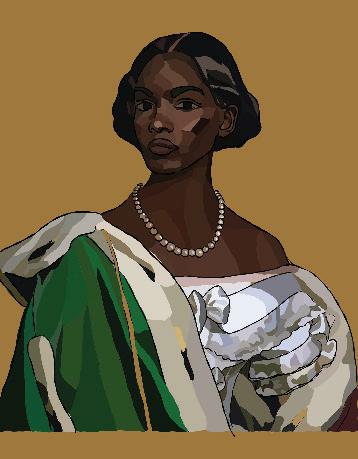
Diana go,” jokes. They’re not funny.”
-Diana Dosso, sophomore Biology/PreMedicine major, Queens, N.Y.
The common thread here is this: no matter the shade, whether darker or lighter, Black women suffer through some kind of pivotal and traumatic experience centered around colorism. Their experiences may not be
one and the same, but their feelings of shame, ridicule, and embarrassment are mutually shared. It is an unfortunate reality for Black women. One in which, though painful, we must stare down in the mirror in order to find true liberation and empowerment.







Go to xulastudentmedia.com to view and read the extended multimedia feature.


 by TaShia Hogue Columnist thogue@xula.edu
by TaShia Hogue Columnist thogue@xula.edu


I have a confession to make and please don’t snatch my Black card for this one.
I still haven’t taken the time to listen to Beyoncé’s new 7th solo album that recently dropped this past July. From trendy dances on TikTok to radio bangers, “Renaissance” has brought its richly packed buffet of sound to the forefront.
Don’t get me wrong I love me some Queen B from her Sasha Fierce era to “Drunkin-Love” Bey on the beach. I had to know what others were saying about this album. Was I the only one who hadn’t fully immersed themselves in the release of 2022’s “we outside” anthem album?
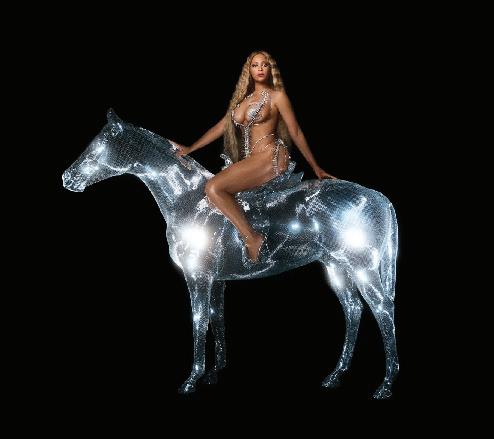
Kareemah Muhammad, a second-year mass communication major from Los Angeles happened to be bumping the album on our way to class. If it’s one song I can hear from a muffled set of air pods, it’s the bass and piano to “Break My Soul.”

“I absolutely love this album,” Muhammad said. “It’s fun, inspiring, motivational and it celebrates Black culture, which I love. It just gets better and better as I keep listening and it never gets old to me,” Muhammad said.
Truly spoken from a worker-bee herself who is a part of the “Beehive” and I refused to get stung. I couldn’t mention my lack of listening participation out of embarrassment so I did what anybody would do in this situation: smile and nod.
On my quest to get some critical takes on the album, who better than the music connoisseur himself,
Roderick Elston, a marketing major from Chicago, Ill. “When I first listened to the album, I was like Oh this is pop music for the girls I’m sure they’ll love it,” Elston said. “Compared to what I recently heard from Beyoncé it just feels like it doesn’t have a story to it, but maybe that’s what pop is about- it isn’t about the story it’s about the sound and what gets people going- not thinking about it too much, but vibing.”
Our faculty are not immune from the beehive sting either.
Over in the Mass Communication department I brought up the “Renaissance album” with Dr. Nia Mason. She said she “couldn’t figure out where Beyoncé was going with it.”
As she pointed out the “overwhelming difference in musical sounds” she labeled the album overall as “not consistent.”
“The songs that were released beforehand were radio-ready versus the unreleased music dropped later in the album that I just couldn’t get into and didn’t find appealing,” Mason said.
In the History department, they love a throwback.
“I love “Break My Soul.” “Cuff It.” It had to grow on me. The first time I heard it I didn’t vibe with it, but it’s played so much on the radio that I like it now,” said Dr. Sharlene Sinegal DeCuir, the head of department for History at Xavier.
“I love “Church Girl,” It has that familiar NOLA beat and the lyrics are great. ‘I’ve been up, I been down; feel like I move mountains; got friends that cried fountains...Nobody can judge me but me, I was born free.’”
Sinegal DeCuir knows her some lyrics and feels it to her core: “I felt that in more ways than one. I’m a wife, mom, sister, daughter, friend, and professor – sometimes I just want to let it go and “drop it like a Thotty” lol.”
And I’m here for it. Go ahead Dr. DeCuir and drop it hard, but drop our lowest grade too while you at it!
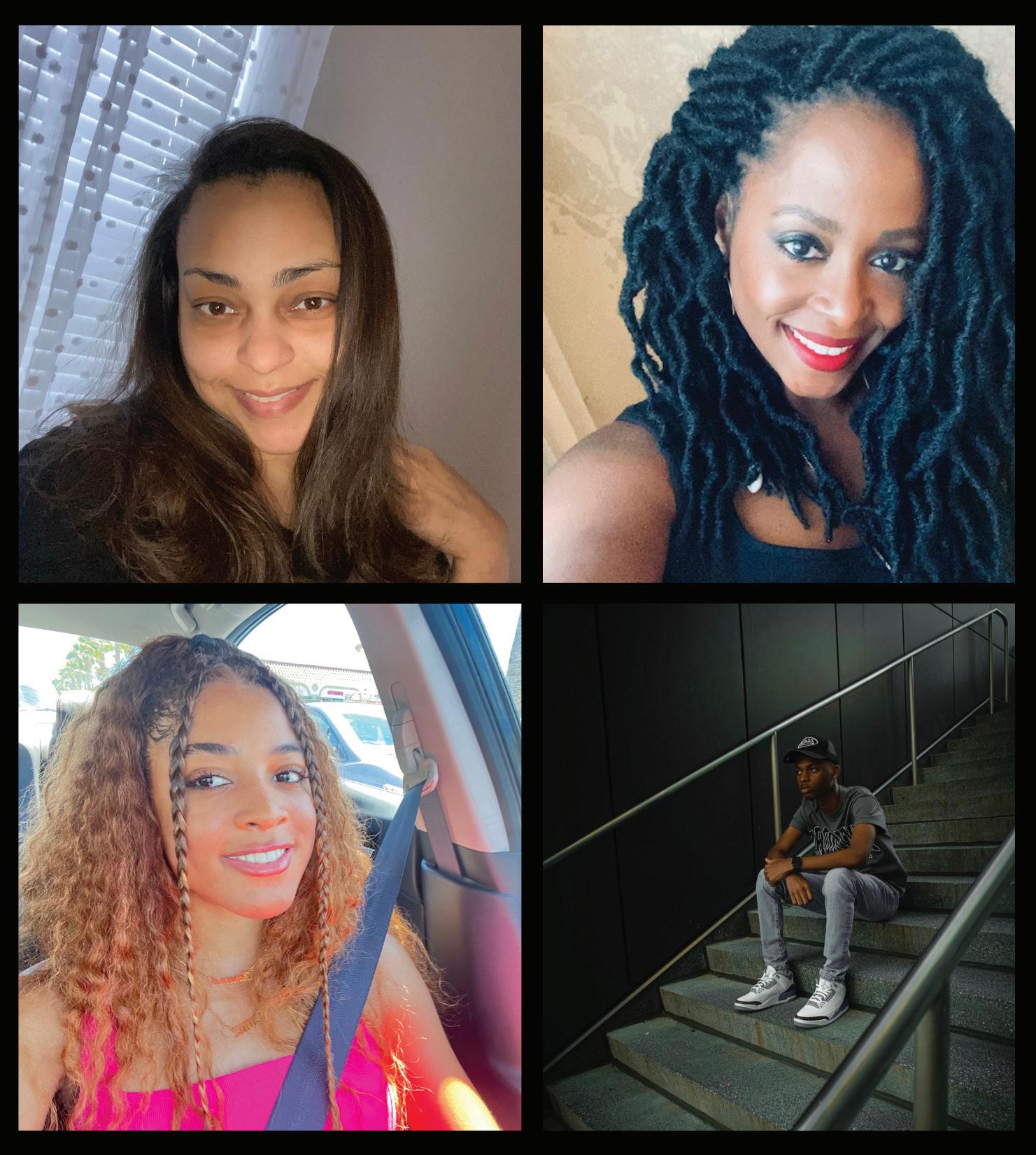
Roller skating has been around since the 18th century, but its heyday didn’t come until the mid-70s and 80s. This is partly due to the creation of Roller Discos and the rise in popularity of Disco and Funk music.


Roller Discos were roller rinks where people would come to dance in their roller skates.
While all kinds of people enjoyed Roller Disco, it’s safe to say that Black people popularized it, considering Disco and Funk were both created by Black people.


Most people still think of Disco when roller skating is mentioned. Pop culture has reinforced this idea with movies like Roll Bounce (2005), set in 1978 Chicago, a major roller-skating city at this time.
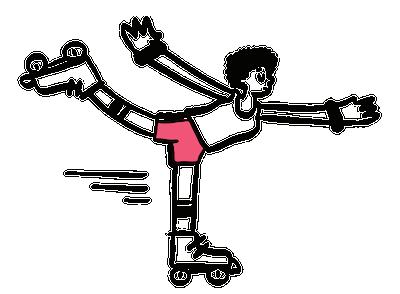
These days, roller rinks play whatever music is most famous, as they did in the 70s, but this might be subject to change as one of the most influential artists of this generation, makes an effort to revive “dance music.”
After a six-year solo project hiatus, Beyoncé
returned this summer with a dance album released July 29, 2022, entitled “Renaissance.” This album draws from Disco, Funk, and other popular genres of the 70s and 80s, such as House and Pop.
“It just makes me happy,” said Ming-Kimora Tate, a junior, psychology major from Houston, Texas. Tate says the words “bubbles, happy, and dance” is what she feels when she listens to “Renaissance.” The song transitions also stand out to her.
“I like how each song, after it ends and the next song starts, it just sounds like one long song,” Tate said.
Various awardwinning producers and musicians from those generations and newer artists are featured, giving each song a nostalgic feel with a modern twist. Track four is a discoinspired record titled “Cuff It” featuring 80s musical legends Sheila E. and lead guitarist of Chic, Nile Rodgers.
The song samples Good Times by Chic (1979), Teena Marie’s Square Biz (1981) and incorporates an interpolation from her song Oooh La La La (1988). Chic’s bassist Bernard Edwards is also featured on the record.
“The samples that she used are like kind of an ‘if you know, you know’ thing,” said Shaylyn Cothron, a sophomore, chemistry, premed major from Louisville, Ky., who said she recognizes the importance of these sample choices.

“It really means a lot for Black people, Black women, and it’s an album for Black queer people, so she kind of touched all of the bases,” Cothron said.


“Cuff It” is the epitome of Roller-skating music from its dynamic percussion, courtesy of Sheila E., to the upbeat guitar from Rodgers, and the overall high-quality production from Raphael Saadiq, Morten “Rissi” Ristorp, and TheDream.
The first part of the song is authentic, feel-good Disco, including lively horns and the funky bass as the core of the music. The percussion is steady, using a classic boomclack pattern that was common in the mid-70s, and it inspires movement just as true Disco would.

“Cuff It… it’s like one of me and my roommates bonding songs,” says A’yanna Nation, a sophomore, neuroscience/pre-med major from Shreveport, La. “We play that song in the car, and we just jumping and feeling good, so I really like it,” Nation said.
At the song’s last minute, a breakdown brings us back to modern times. The guitar and bass become synths, the percussion is that of a more modern hi-hat heavy sound, and the horns become automated rather than live.
The song begins to sound like a pop song we hear these days.
Beyoncé uses these subtle changes to remind us of the roots of our music and


how things can transform over time. It seems to be received well. In August, shortly after its release, Kaitlyn Hardy and Maycee Steele created a TikTok dance challenge to “Cuff It” that incorporates dance moves we tend to refer to as “old school.”

It may not be historically accurate, but it is proof that Beyoncé’s attempt at making a song that can time travel and bring us back to a time we might not even have experienced was successful.
by Chris Taylor Photographer ctaylo29@xula.edu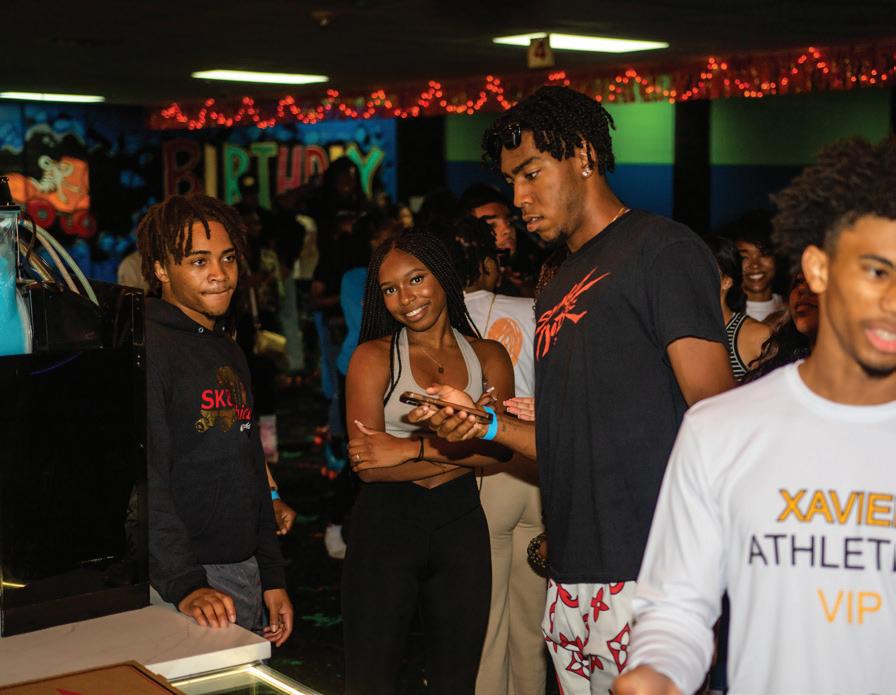
“Cuff It”: an Homage to Black Feel Good Vibes
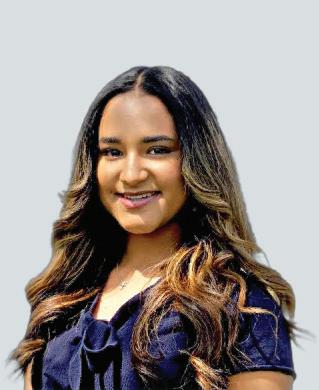
I know I’m not the only one that gets the urge to return to my pimped-out DP crib before I even step foot in the $40+ Uber headed to the airport.
Like many Xavierites on campus, for me to get from point A to point B it takes a costefficient form of transportation (Uber/Lyft, plane, bike, bus, etc.) to get me there. From one broke college student to the next: why turn back when you and your pockets can just relax?
From the anxious TSA
threatening to throw out all of your Bath & Body Works lotion, to the annoyances of traveling in a talkative Uber during rush hour and don’t even get me started on the prices of the plane tickets. Homecoming, not the T’d festivities that you put your best fit on for, but as in returning home over break … Overrated!
While the return home is often anticipated, I would rather stay where the curfew is nonexistent, and my sense of solidarity flourishes. I go out and come in when I please and more importantly I’ve gained more sense of responsibility.
When I spoke to my homie Journee Scott, a second-year psych/pre-med major from Houston, about her take on this unpopular opinion she was feeling me.

“What makes me want to return to my apartment is seeing my family doing fine without me,” Scott said. “It’s a bittersweet moment because knowing they’re safe and well, I can accomplish what
I left home to do. To see my family’s accomplishments and progression from afar is a unique, indescribable feeling. It makes me cherish and respect them more,” Scott said.

dysfunctional. It’s always good to laugh with them and make memories. Don’t get me wrong. But there also comes a time where you begin to appreciate being on your own and away from home!
Shaheed Johnson, a fellow Xavierite from California, agreed with me as I started to think that maybe this opinion isn’t so unpopular.
Being away from home isn’t always a bad thing. The distance can even be used as motivation. I don’t know about you, but I come from a strict two-parent household meaning I’m in the house by 9 p.m. (before any of the outside festivities begin). My younger brother makes it his job to argue and bother me, but I wouldn’t say we’re
There are a few families that are chaotic within the first 15 minutes of the reunion. Where the idea of home is the opposite of nurturing and calm. So, quality time might not be an option for everyone. Keeping in mind that not everyone loves homecoming. I was chopping it up with my neighbor Khrystal Camilo, a second-year biology Pre-med major from Boston, Mass., on our way to grab two Spicy Chicken Deluxe – with American cheese.
“When I’m home, I work and keep busy just to avoid being stuck in the house. School isn’t just about pursuing my education anymore; it’s become an outlet for me,” Camilo said. “I’m surrounded by a community that gives me resources to find peace and I’m given my own space something I couldn’t get back at home with such a big family.”

While the majority might’ve traveled home for fall break traveling to the café was easier because the lines were short, and the campus was quiet. Absolutely no foot traffic to hold up the elevators and oh those neighbors who’d usually blast music until 1 a.m. were a distant memory. [At least until Monday night].
“I don’t look forward to the long flights, the layovers and amount of time I’m allowed home, we have just a few days off which is never enough just to turn right back
around,” Johnson said.
A couple of days off is nice but me traveling 818 miles just to spin the block within two days is crazyyy. Can I get an Amen?
I refuse to go back to dealing with “who’s week it is to wash dishes” or eating leftovers for a week straight knowing (even though the home cooked meals be bussing) the café would at least provide me with daily options and the bread roles never miss.
A window seat? In a cramped car with my gassy little brother or boarding a flight that just so happens to have two crying newborns on board, No Thanks!
Besides, sharing a room with a roomie in your age group is way better than sharing a room with a sibling who doesn’t understand the concept of using the dirty clothes hamper.
by Liza Montgomery Comics Illustrator lmontgo2@xula.edu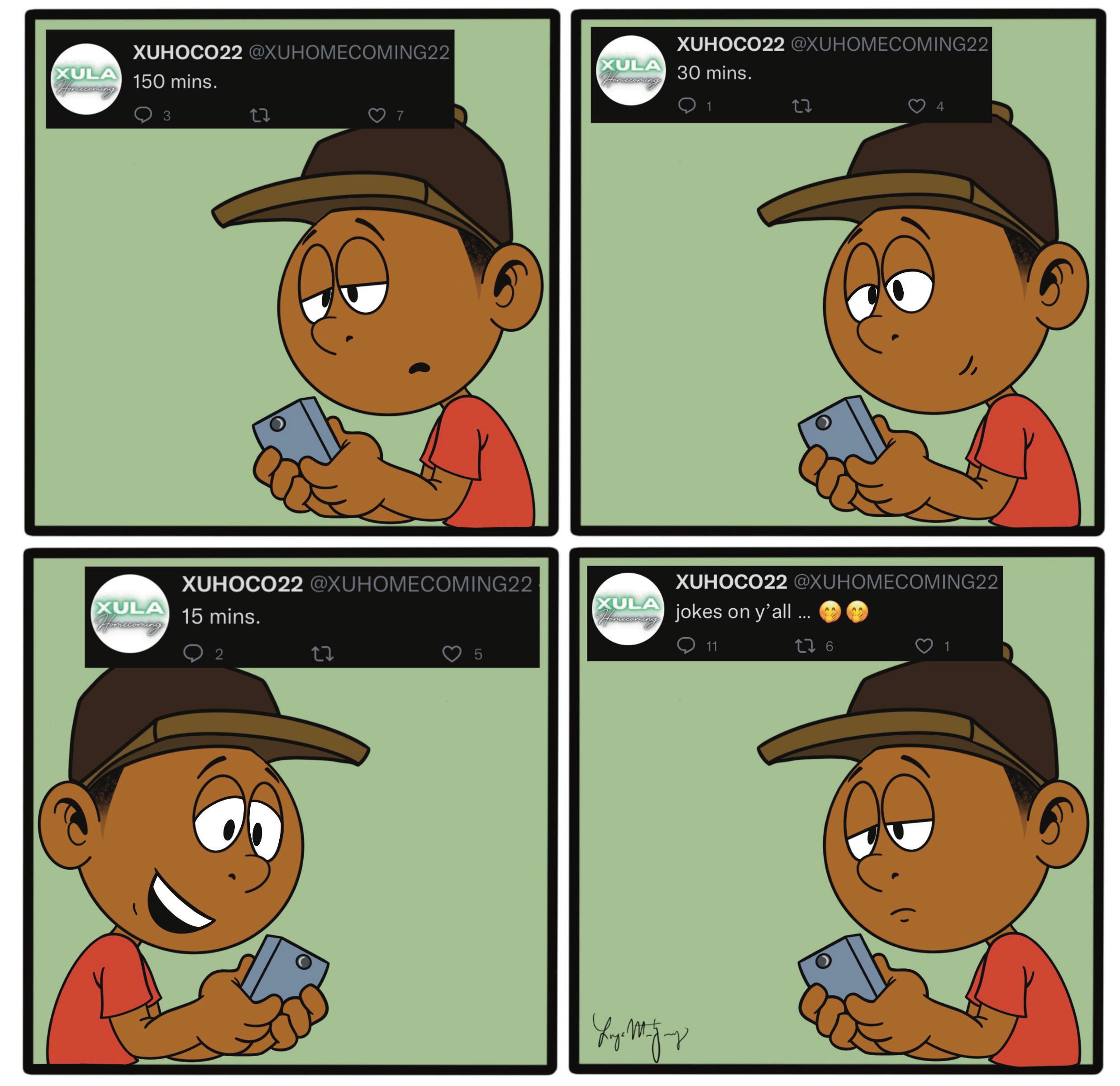
Many say that college is a great time to find out what is your lifelong dream, but that has sometimes been an understatement. When young adults enter college, it can be hard to adjust due to new experiences, having new responsibilities, and growing pains. It is also nerve-wrecking because this is the first-time students will have to navigate their own physical and mental health without the help of their parents. As a result, students can develop mental illnesses or other physical illnesses as well.
College is a key developmental time for young adults, experts said. Without
proper mental care, the stresses that come can lead to the onset of mental health issues such as depression, anxiety, and schizophrenia. Roughly 65-percent of mental health issues begin by age 20 and take a huge toll on students, according to data collected in a study by researchers at Boston University.
“Ever since the pandemic has begun, we have had a ton of new patients who have been dealing with these issues every day,” said Tyana Robertson, a developmental pediatrician who spoke at Xavier’s Mental Health Fair on Sept. 21 in the University Center.

“The numbers have increased since the pandemic due to many people terrified of catching the virus,” she said. “We hope to lower the numbers by giving the resources and tools that they need to get better,” she added.
The American Psychological Association
noted that in the 2020-2021 school year, roughly two-thirds of college students identified as suffering from at least one mental health challenge. About half of college students believe the COVID-19 pandemic has affected their mental health in college. Anxiety was also the leading mental health challenge that college students said they faced during the pandemic.

“Depression and anxiety have led to many suicides across college students,” said Dr. Thomas Maestri, a clinical associate professor at Xavier. “Students who were dealing with peer pressure or issues in their social life were the ones likely to commit suicide,” he said. “We have noticed a 22-percent jump in suicide deaths this year in the country compared to 2013 and hope that we can reduce these numbers as quick as possible,” he added.
More students are seeking help to resolve their
mental issues, the APA found, up 40-percent since the start of the pandemic. Traditionally, students coped by hiding the pain or becoming reclusive. Across the country more schools are providing a variety of resources to respond to the uptick in demand. It is a start to destigmatize seeking support for mental health problems.
“Many students feel like people won’t understand
releasing stress.
by Faith LeMelle Staff Writer flemelle@xula.edu Photo by Faith LeMellePets can be a great way to help reduce anxiety, according to the Medical Health Foundation. With the weight of dealing with the transition to adult life, pets can provide students with a healthy way to cope with stress.
Xavier’s Mobilization
At Xavier program, Pet Awareness With Students or PAWS, partners with local pet shelters to allow students to volunteer with shelter animals.
Animal Rescue New Orleans hosts ten to 12 students with weekly trips to play with shelter dogs and cats. Students come and provide the animals quality time, while also

“It eases the anxiety I have about being away from my pets at home,” said Sydney Midgett, a sociology major at Xavier, from Chicago, Ill. “It distracts me from the general stressors of being a college student,” Midgett added.
A study conducted in June 2022 by the American Heart Association shows that 70-percent of overwhelmed people would rather spend
time with their pets than watch television to de-stress. The most popular way pets help people de-stress is through snuggling, making their owners laugh, and helping them feel less lonely.
“I have pets at home, so it helped with my homesickness,” said Hailee Booth, a computer science major from Atlanta, Ga. “I enjoy giving up some of my free time to give the dogs and kittens company and make them happy,” Booth added. At the shelter, the students are put into two groups: dogs and cats.
From there, the students who volunteer to spend time with the dogs will take them on walks and play with them. The other group will sit in the room and play with any cat that is willing. There are play pens where students can take the animals and play with them. Students can also take the dogs on walks around the neighborhood to get their daily exercise.
“My favorite thing about PAWS is that it allows me to be a friend to neglected and traumatized pets. It makes me happy to see them regain trust and a connection with humans and other animals,” said Reeci Floyd, a former site-student leader for Xavier’s PAWS. “I love seeing them socializing and active. It makes me aware of their feelings too, that I can sympathize with them and carry on to other sentimental beings. Pet therapy is a stress reliever for me. I can get away from school and other stressors
what they are going through,” said Milad Chedid, a fourthyear pharmacy student. “I’ve had my own share of mental health issues, but I realized that I needed to talk to someone and after doing that it has really helped me be in a great position today,” he said.

“I hope everyone takes these issues seriously because it is not something to joke around with, and needs to be dealt with immediately,” he added.
by simply taking time out to understand and care for them,” Floyd also added.
Students have two hours to interact with the animals and receive two hours of community service hours. This partnership is beneficial for both organizations and the animals. The animals get the chance to play, while students get the opportunity to decompress.
“I became a member of PAWS because I wasn’t able to bring my dog from home while living on campus, and my dog was the most emotional support I had back then,” said Ayanna Griffin, a business sales and marketing major from Memphis, Tenn. “PAWS has impacted me in multiple ways. It has allowed me to explore building relationships with cats and not solely being a dog person. This program has also allowed me to form relationships with other animal lovers. It shows me how to best care for my current kitten now that I live off campus,” Griffin added.
During the COVID-19 pandemic, athletics on campus took a major hit. COVID testing twice a week was mandatory as well as wearing masks during games. Additionally, students weren’t able to attend most games to support these athletes, so school spirit was at an all-time low. Despite the changes, these athletes pushed forward working harder than ever before. They went to conference championships, and some made history winning it all. Now, Xavier’s athletes return with awaiting crowds. Games are back open to the public and athletes’ enthusiasm has soared. Xavier Athletics and all it encompasses has returned!


Here’s the breakdown. A five-hour flight from Lebanon to Brussels. Once in Brussels there is a onehour layover. Once this hour goes by, back on the plane
for 8 hours and 30 minutes to Washington D.C. One more layover for 3 hours and getting on the airplane for the last time for 5 hours to land in New Orleans.
This is the journey Yara Bouharb, the new freshman point guard on the Xavier women’s basketball team, had to take from her home country in Lebanon to her new home in New Orleans.
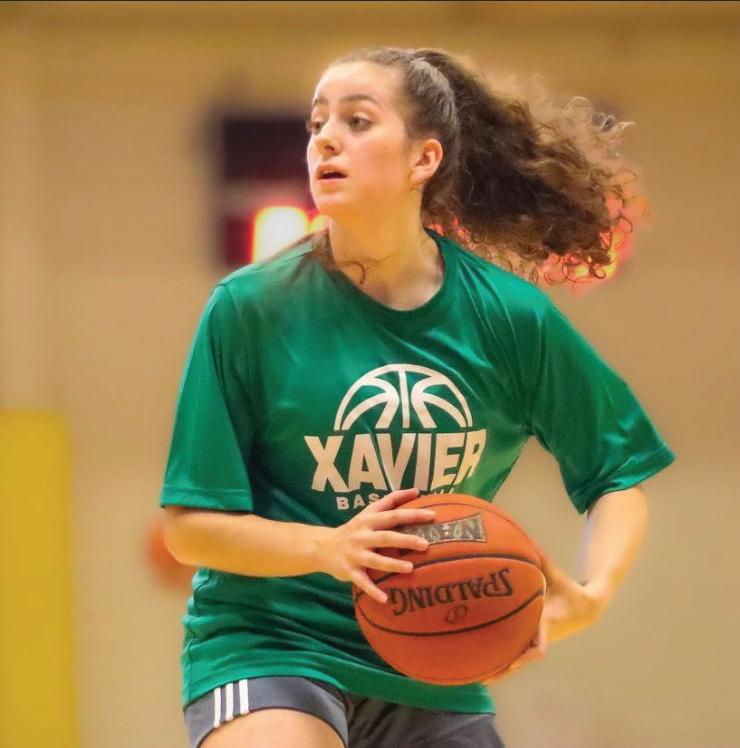
Bouharb picked up her passion for basketball from seeing her brother and sister play it while she was young, and decided to start playing herself at the age of 10.
“I miss Lebanon every day. The United States has a completely different culture
especially here at Xavier. So I’m learning about the culture and getting to know the people,” she said.
A question that many people bring to Yara is why Xavier? Why come 6,787 miles across the world to a small HBCU? Yara knew that the decision for the next phase in her life was important and she wanted to make sure that it was going to be the most beneficial to her. Coming to Xavier was a culture shock, she shared. It was difficult having to adapt to an entirely new culture coming from Lebanon, to being at an HBCU in New Orleans.
“Adapting to the culture here has been somewhat difficult because my culture is so different but I am surrounded with people that are helping make that process easier,” Bouharb said.
With Xavier being as heavily academically focused as it is, the neuroscience major knew that Xavier was going to push her, which was a big part of her decision.
“I knew Xavier was going to challenge me the most and set me up for success,” she said.
The rigorous classes students are required to take at Xavier can have a toll on their mental health and basketball is what she uses as her escape. The classes and the work that are required to succeed can be extremely draining, and being able to look forward to play the sport that she loves is what puts her at peace.

Between the busy day-
Series in his rookie season.
to-day life of being a collegiate student athlete, and trying to get used to the lifestyle of being a college student in general, Bouharb said she is learning to find balance.
“I have this 24-hour rule where everything that happens today, the good and the bad, does not roll over to tomorrow because tomorrow is a new day,” she said.
by Cameron Finn Sports Writer cfinn@xula.edu
Baseball.
What once was America’s pastime has become a white-dominated sport in the U.S.
The game of baseball in the 1920s was loved by all Americans: both Black and white. With the creation of the Negro Leagues in 1920s, Black baseball athletes found a way to push forward to play professionally in this sport even as they faced racism and adversity. One bright spot was that HBCUs always gave Black baseball athletes the chance to play the game they loved at a collegiate level.
Joe Black from Morgan State University started in the Negro Leagues and then became the first Black pitcher to win a World
In Louisiana, Southern University in Baton Rouge has produced baseball greats like World Series champion Lou Brock, Golden Spike award recipient Rickie Weeks, Jr. and Grambling State University produced Mets Hall of Famer Tommie Agee.
Xavier University played its final baseball game in 1960 before the baseball program was closed. It was revived in 2019 and Coach Adrian Holloway was chosen to lead Xavier’s baseball into the future.
“The history of baseball at HBCUs is rich,” Holloway said. “We must try
and help add to the number of Blacks in Major League Baseball.”
In 2015, the percentage of African Americans in the Major Leagues was at 7.7-percent. Having baseball at an HBCU presents a chance for Black kids to be represented and in turn would make them want to participate in the sport, Holloway added.
“I was inspired by Marcus Stroman and his dedication to not letting the lack of representation effect how he expresses himself as a Black man,” said Xavier baseball player Lawrence Steed from Tallahassee, Fla.
who is studying biology, premedicine. Stroman is a pitcher for the Chicago Cubs. Baseball needs more icons like Stroman to inspire young Black athletes to see themselves in the sport and HBCUs are giving them that chance, Steed said.
Unlike baseball, sports like basketball and football have huge African American representation. Roughly 73.2-percent of NBA players are Black and 58-percent of NFL players are Black. Young Black athletes must know that baseball is not only a “white sport,” and that there are opportunities to thrive in baseball just as easily
as every sport, players said.
Xavier’s baseball team plays their home games at Major League Baseball’s Urban Youth Academy. The Academy gives free lessons to kids in the surrounding neighborhoods to spread the game to underprivileged African American children.


“Please bring the kids to the game, you never know who will be inspired to be the next Jackie Robinson or Ken Griffey Jr.,” Coach Holloway said.
The Xavier baseball season restarts on Feb. 5, 2023 with the Gold Rush taking on Tougaloo College.

 Photos by Zora Thomas
Photos by Zora Thomas
When you think about sports at an HBCU what sports do you think of?
Your first thoughts might be football – being in the stands on a Saturday night watching each team fighting to reach the end zone with a roaring crowd, cheerleaders, and band in a stadium.
More unique to Xavier, thoughts draw of the Convocation Center where our basketball team plays as the focal point of our Homecoming. A Xavier sports team that you should think of has six players on the court with whistles blaring and a ball flying over a net


The volleyball team has dominated the Gulf Coast Athletic Conference since 2011, winning the conference championship ten years in a row after being in the conference for 40 years. The team was fit to clinch another conference title in the GCAC but in July of 2021 they switched to the Red River Athletic Conference. Debuting in the RRAC they struck gold, taking the conference championship against the Lady of Our Lake in a five-set battle, 25-22, 23-25, 25-12, 22-25, and 15-4.
They would finish with a record of 14-6 and a hitting percentage of 0.216.
“Our goals are the same, the conference we play in does not matter. The end goal is to win the conference and first round, to go to Nationals,” said Angela Egonu, a senior and outside hitter of the team.
Xavier has made their presence known at the conference this season performing with the same determination and consistency as last season with a record of
moved onto the first round of the National Association of Intercollegiate Athletics tournament the Gold Rush was eliminated by Life University in a three-set match (26-28, 18-25, 22-25). But they would avenge themselves this season as they beat them in a threeset battle on Life University’s home-court (27-25, 25-20, 2515) on Aug. 26.
“We want to go to Iowa for the NAIA tournament,” said Kennedy Wade, the junior outside hitter and co-captain, after their back-to-back match sweep against Texas College on Sept. 17, 2022.
In preseason, Xavier volleyball was voted as No. 1 in the RRAC coaches’ poll for the second straight year. The poll was precise as the team’s tenacity has been shown in gameplay and accolades. Six players on the squad; Emi Riglioni, Kennedy Wade, Sydney Murray, Linda Mungai, Semira Blair, and Kennedy Mack have all won RRAC players of the week this season.
“Well, I think we have good depth on this team,” sixyear head coach Pat Kendrick points out after their match win against Texas A&M Texarkana, on Oct. 7.
“We’ve got a number of people we can call on to do different things, so you know the program is growing and again we’re recruiting really good players. We’ve got good players on the team and we’re training hard and so things are going well,” Coach Kendrick said.
After the water damage that occurred in the Convocation Center early last year the volleyball teams home games have been moved to the University of New Orleans Human Performance Center.
Center, the jumbotron and being close to their community, they are dedicated to making the best of their situation and are not letting a location change get them off their game.
“I hope that Coach Kendrick and the volleyball team will continue the streak of wins and conference championships,” said Xavier’s athletic director Nathan Cochran.
“Additionally, I hope the team advances to the final rounds of the NAIA National Volleyball Tournament. The volleyball team has handled the adversity of not being able to play at home very well, and I am incredibly proud of their success,” Cochran added.
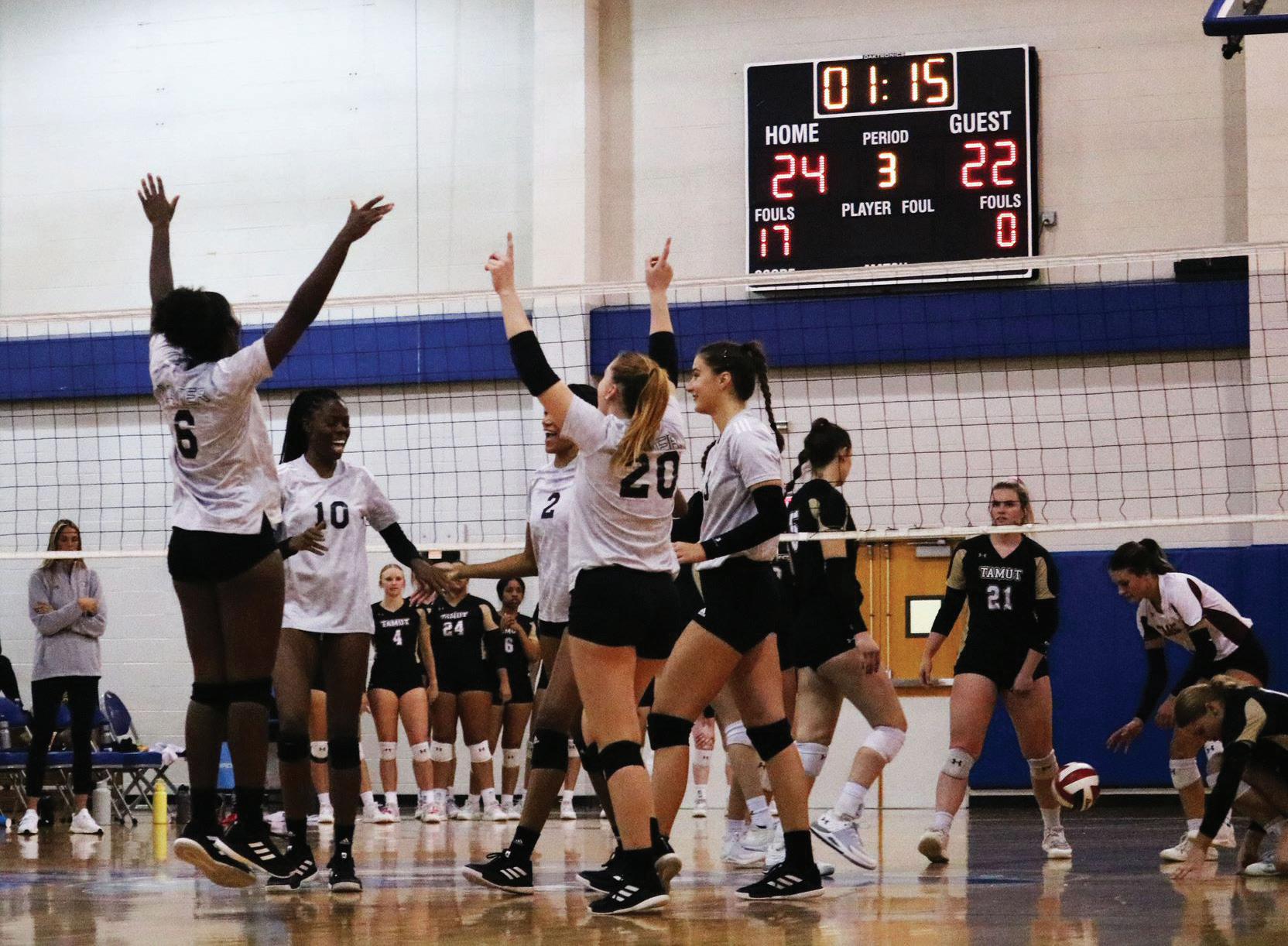
separating the Gold Rush from their opposition – the women’s volleyball team.
The women’s volleyball team at Xavier has been one of the highest performing sports at Xavier for over a decade and has their sights set on their 12th consecutive conference championship.
(15-6) and (10-1) in the Red River Athletic Conference as of Oct. 22, 2022.
“As our coach said, sometimes our biggest competition is our own team,” Egonu said. “At the end of the day whatever we bring to practice will translate into the games we play.”
Last season as they
Mungai has won the award four times this season for Defender of the Week. Followed by Kennedy Wade, a three-time recipient of Attacker of the Week. Emi Riglioni and Semira Blair both received awards for Setters of the Week and Sydney Murray, for Attacker of the Week and Kennedy Mack for Defender of the Week.
“It’s a little rougher when we’re off campus here at UNO but we appreciate them letting us use the gym,” Kendrick said. “But we just want student support, faculty support, and you know for everybody in the Xavier community to know that we do have a good team. We’ve had a lot of success for doing well this year and we want their support,” she said.
Though the team misses the Convocation
As the Gold Rush continues with their season, they hope to push onto the NAIA with the RRAC conference tournament beginning on Nov. 11.
Professional athletes such as Simone Biles and Naomi Osaka have spoken out on their struggles with mental health and sports. However, when it comes to college athletes, who don’t have the same outlets, it can be difficult to voice their struggles.

Student-athletes mental health cases continue to rise based on a recent National Collegiate Athletic Association’s (NCAA) Student Athlete Well-Being Study in May 2022.
The NCAA conducted a survey with over 9800 student athlete responses in a research study with NCAA Sport Science Institute and the
said University of California Los Angeles (UCLA) women’s tennis alumna Terri Fleming in an interview where she spoke about the struggles of dealing with her mental health. “Sadly, there are large pieces of my college career that I simply can’t remember because of how stressed I was at the time. If I could go back, I wish I had someone tell me and my friends, that it’s okay to not be okay. We need more support systems and people in athletics that can validate the chaos of athletics and what comes with it,” Fleming added.
Division I, II, and III StudentAthlete Advisory Committee.
“When I was at UCLA, I found it extremely difficult to prioritize my mental health. I found myself constantly living in a state of heightened stress and anxiety,”
The study statistics show that ever since the COVID-19 pandemic mental health has been at a rapid decline at 1.5 to two times higher than it was pre-pandemic. That rate for student-athletes has only gotten worse ever since the pandemic.
College athletes are 2-percent more likely than non-student athletes to suffer from mental health. The mental health sufferings include anxiety, eating
disorders, depression, and substance abuse.
“A lot of my peers struggled with anxiety, depression, and panic attacks that often led to needing medication,” Fleming said. “Student athletes are treated like commodities, rather than people, and are routinely pushed to the brink physically, mentally, and emotionally, with no regard for their feelings, only concern for their ability to perform and compete at the highest level,” Fleming added.
The American College of Sports Medicine reported in 2021 that 30-percent of women and 25-percent of men that are student-athletes have reported sufferings due to mental health. Out of that 30-percent only 10-percent have sought out help.
Triggers for mental issues for student-athletes have been reported to be due to missing classes for competition, lack of sleep, drama with teammates and coaches. 49-percent of women’s sports and 36-percent of men’s sports reported academic worries is the main factor when it comes to mental health.
“I feel like studentathletes have an 18-hour work
day. It’s getting up for 5 a.m. practice, late night study halls, and somehow managing to have a social life, it all weighs on you,” said former Xavier University of Louisiana basketball player Joseph Scott who talked about the struggles of balancing academics with athletics.
“I remember being on the road and missing class for three weeks at a time. Stressing out about tests, and classwork really takes a toll which overall leads to mental exhaustion,” Scott recalled.
In a 2020 survey, women’s athletics were asked if they dealt with feeling of loneliness and hopelessness. The NCAA reported 38-percent of women’s sports and 22-percent of men’s sports players reported experiencing those feelings as well as feelings of mental exhaustion.
“Being a student athlete is really difficult. A lot of the times you have to deal with all of the school work then having to go to practice and tournaments. Sometimes professors or even my friends really won’t have any sympathy or understand just because I’m an athlete,” said Lindsey Dixon from the Xavier women’s tennis team.

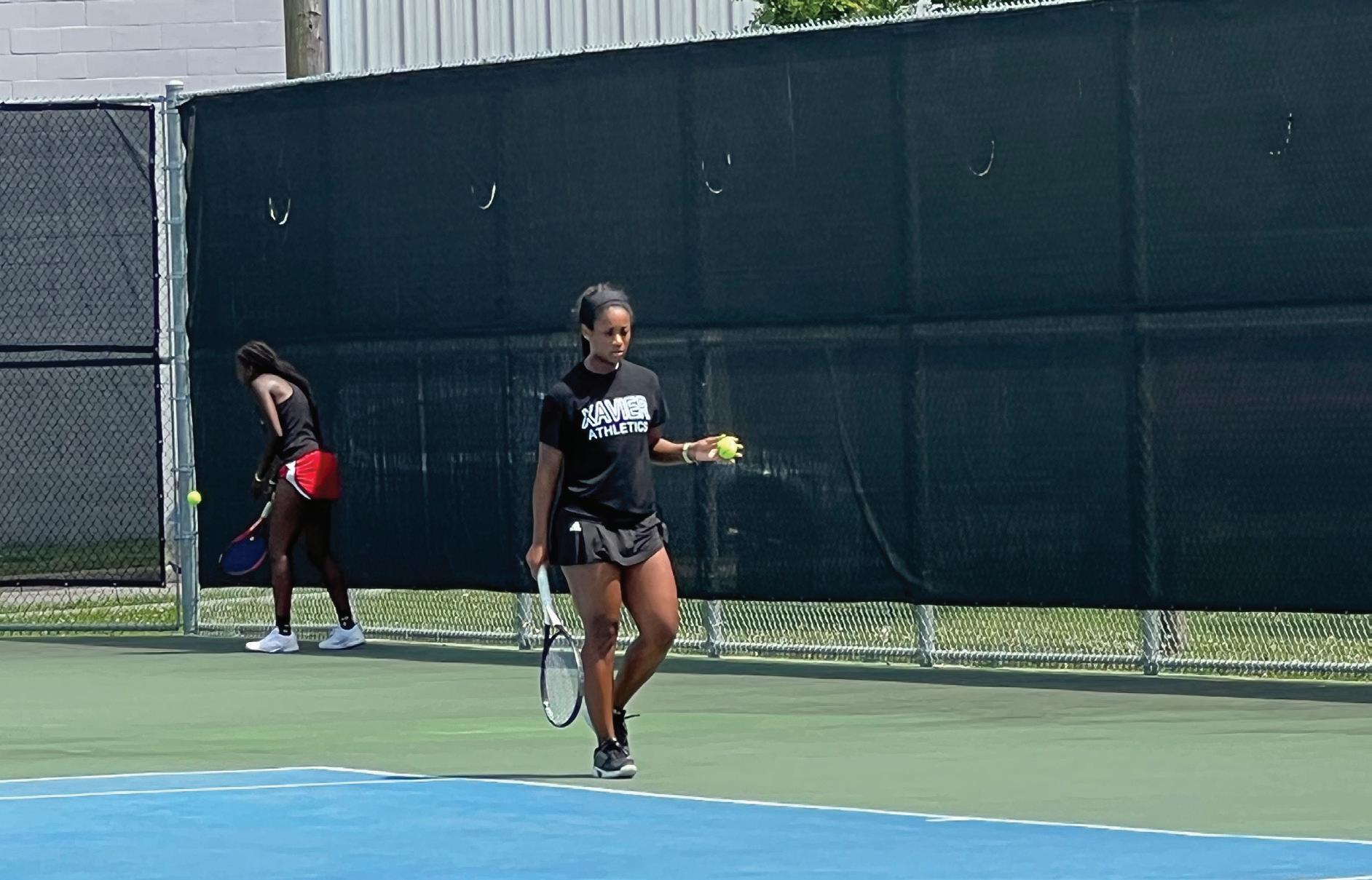
“Going to 6 a.m.
practice and not having any sleep because I’ve been studying; it’s really just risking more injuries to your body. People don’t realize that your mind is connected to your body, and if you’re not completely there you’re not going to be able to fulfill your duties. Hopefully people star realizing that more,” Dixon added.
Student-athletes were asked if they felt their coaches would take their mental health problems seriously, 59-percent in men’s sports agreed or strongly agreed and 50-percent of women’s sports agreed or strongly agreed according to the NCAA report in 2022.
“Seeing professional athletes like Naomi Osaka and Simone Biles pulling out of big competitions is eye opening. We know they can perform, but maybe it just wasn’t their time to perform,” said sophomore Xavier crosscountry runner Steven Wilson from Atlanta, Ga.
“When we see that, it can be inspiring to us to be able to say I could go out there and give a subpar performance on the track or I can just say I know in my heart I just can’t right now,” Wilson said.




